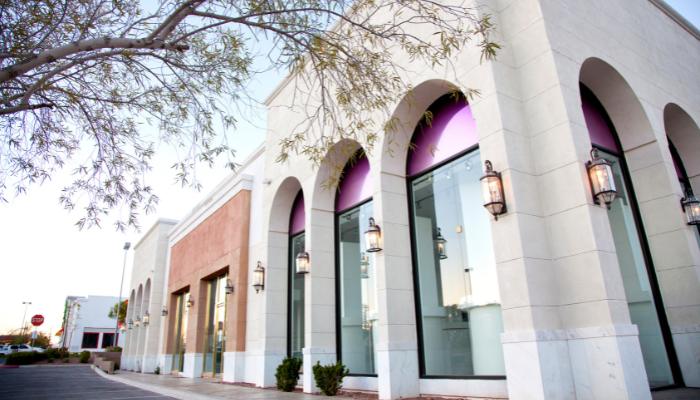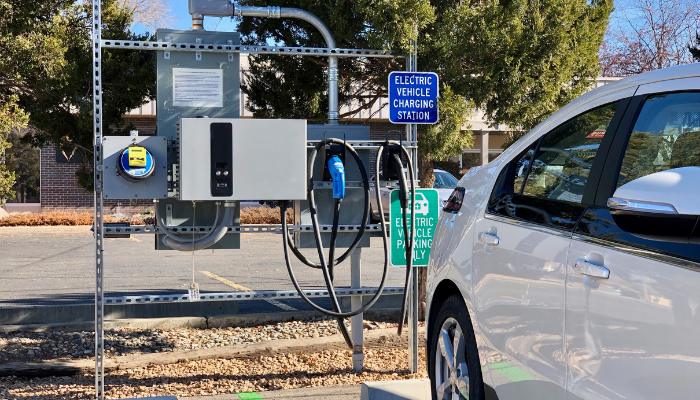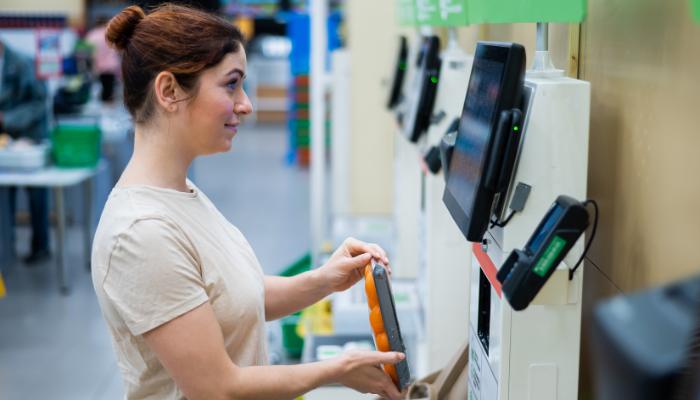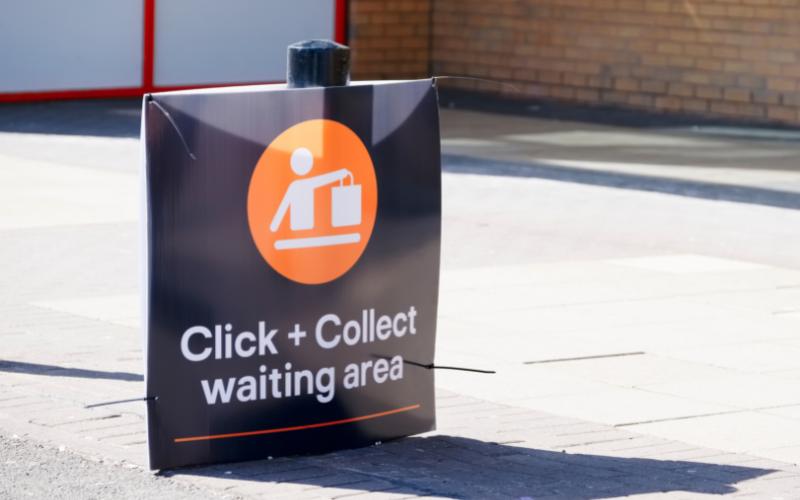Retail Construction Trends 2024
The construction industry is made up of several different sectors, one of these being retail construction. The other main sectors are commercial, residential, and industrial construction, but for the purpose of this article, we are discussing retail construction only. Each type of construction may implement different strategies to get the job done, and will also have different goals, needs, or objectives.
Take a look below to learn more about the retail sector, as well as some of the biggest new retail construction trends that have emerged in the past years and that we expect to continue into 2024.
What Is the Retail Industry?
First things first, what is the retail industry, anyway? The retail industry is the industry that is part of the transportation, trade, and utilities supersector. Specifically, the retail trade sector is made up of businesses, structures, or establishments that are focused on selling or retailing merchandise— hence the name “retail industry”. Typically, these goods that are being sold are done so without transformation, and services that are incidental to the sale of the merchandise can be included in consideration as retail as well. It is important to know that a retail business is not the same as wholesaling. An example of retail is a shopping mall or strip mall where products like clothing are being sold.
What Is Retail Construction?
Now that you know what the retail industry is, you may be wondering what exactly the retail construction industry entails. It can be inferred, of course, that this is the construction sector that constructs these retail spaces. It can also be defined as residential or commercial construction that is done for others. For the purpose of this article, though, we are going to discuss retail construction as it pertains to renovating or building a store, restaurant, or other commercial space. Retail construction does also require different and special attention. As with any type of construction, you will need to be cognizant of the intended use of the space as a final product.
The requirements for a retail space differ from the requirements of a residential space, for instance, which is why a construction company should be well versed in retail commercial construction before taking on one of these kinds of projects.

Have A Retail Project In Mind?
Let’s Make Something Great Together
Retail Construction Trends
As retail needs change, retail construction must adapt and change to meet these needs— and to avoid being left behind. Many of the segments of the construction industry, retail construction included, are implementing more technology these days. Another big theme of retail construction now is developing strategies that help you to transform the physical operations in less time. Retail spaces are also seeing more innovation in purpose and function, which means that the retail construction industry needs to be able to build accordingly!
Read on to learn more about retail construction trends that are being seen more and more in the retail construction industry, and how general contractors are implementing them in this industry.
1. Sustainable Design
Sustainable design in the construction industry is increasingly gaining traction, not only due to the sector’s significant environmental impact but also because of the growing global focus on sustainability in all aspects of life. This trend includes an emphasis on energy efficiency, which is a crucial element in reducing the ecological footprint of buildings.
Energy efficiency in sustainable design and building materials can be approached in several ways:
- High-Efficiency Systems: Incorporating high-efficiency heating, ventilation, and air conditioning (HVAC) systems, as well as energy-efficient lighting and appliances, reduces energy consumption and greenhouse gas emissions.
- Renewable Energy Sources: The integration of renewable energy sources like solar panels and wind turbines contributes to a building’s self-sufficiency and reduces reliance on non-renewable energy sources.
- Building Orientation and Design: Thoughtful building design, including orientation, layout, and the use of energy-efficient windows and insulation materials, can significantly reduce the need for artificial heating and cooling, thereby saving energy.
- Smart Building Technologies: Implementing smart building technologies, such as automated lighting, heating, and cooling systems, can optimize energy use based on occupancy and environmental conditions.
- Energy Monitoring and Management: Systems that monitor and manage energy use can identify areas for improvement and maintain efficient energy use over time.
- Green Roofs and Walls: These not only improve insulation but also contribute to cooling, reducing the urban heat island effect and lowering the energy required for air conditioning.
The LEED (Leadership in Energy and Environmental Design) certification program, includes specific credits for energy efficiency. These address various aspects such as optimized energy performance, renewable energy, enhanced refrigerant management, and green power. By adhering to these standards, construction companies can significantly reduce the environmental impact of their projects while also often reducing long-term operational costs.
In addition to LEED, there are other certifications and frameworks like BREEAM (Building Research Establishment Environmental Assessment Method) and the Living Building Challenge, which also emphasize energy efficiency as a key component of sustainable construction.
Incorporating these energy-efficient features not only aligns with the growing environmental consciousness but also responds to increasing regulatory requirements and market demands for sustainable and efficient buildings. As the construction industry continues to evolve, the integration of energy-efficient and sustainable practices is likely to become the standard, benefiting both the environment and the economy.

2. Energy Management or Net Zero Goals
Energy costs are rising, and this is something that is affecting not only homeowners, but business owners that need to power their spaces, too. This means that, as a result, one of the emerging trends for retail construction has been energy management planning. A stronger commitment to energy management or net zero goals has emerged in the retail space as business owners try their best to cut material costs wherever they can.
Another reason for this initiative can be customers’ sustainability concerns. Energy management planning is therefore being implemented into the building design purpose before construction even begins! Other things that we will see more of to achieve these net zero goals are solar panels powering retail locations, and other renewable power sources being used, like fuel cells.
3. Collaboration Across Functions
Another of the retail construction trends we are seeing is the adoption of multifunction collaboration, which can help construction companies to move their projects more rapidly from planning stages to design and then to construction! This sharing of information across teams has been made easier by different technology platforms that can be used by both the retail client and the construction and design teams. The teams can work hand in hand and focus on objectives and functions like energy management, sustainability, engineering, construction management, and more.
4. Stores Within Stores
Convenience is also very important when designing a space that is meant for consumers. We live very busy lives, so the fewer places that a customer has to go to get all their errands done, the better. In fact, 52% of consumers say that convenience affects their spending or buying decisions. This is where the stores within stores trend comes in as an emerging retail trend. A great example of this is when a store offers third party services within its space, such as a pharmaceutical counter in a general merchandise retailer, or a cafe or coffee counter in one of these spaces or at a chain bookstore.
These days, when it comes to the latest trends in retail design, many retailers want to dedicate large spaces or areas of the store to these stores within stores, focussing more on the customer experience. Customers can then shop for the other items on their lists when waiting for their prescriptions, for example. Pop up stores, or flash retailing, is another trend that falls under the umbrella of stores within stores. This often requires a dedicated space for pop ups to be built into a retail structure, or will require remodeling.
5. Convenience Driven Design
Convenience driven design is almost a subset of the stores within stores trend that we discussed above. Both trends are borne of the desire of customers to have the most convenient shopping experience they can, and from the desire of retailers to deliver this to the consumer— and then make more money because of it! Pop up stores or stores within stores are one way to achieve this, of course, as we went over above. However, there are some other ways that retail construction is achieving convenience driven design, too. An easy way to do this is to design or build zones within the store, that can be segmented or blocked off in case of renovations, still allowing easy access to the other areas of the store for consumers. These types of areas are also more able to adapt to changing needs within a retailer.
6. Contactless Shopping Experiences
One of the retail trends that really emerged and gained popularity due to lockdowns and the pandemic is the contactless shopping experience. While many things have gone back to normal these days, contactless shopping has still remained. This is because it is convenient, and it being one of our only options during the pandemic made people realize how much they liked it! When designing or building a retail space, then, many will want to account for contactless shopping experience options. Many contactless shopping experiences are as simple as building a separate area for self checkout or contactless payment options— this allows customers to come in and make a purchase without speaking to an employee. It has been popular for a long time in convenience and grocery stores, for example.
Since 2019, the number of people who prefer to use contactless shopping has skyrocketed to 87%. Retail spaces will, therefore, want to create a dedicated space for contactless shopping, as well as setting up an area for traditional shopping or checkout experiences, too.

7. Click and Collect Spaces
Click and collect spaces are similar to the contactless shopping spaces that we have discussed above, but they are not quite the same trend. If something is click and collect, this is where a person is able to do online shopping and then come pick up the goods in store after they have already paid online! It is very convenient and became very popular during the pandemic, just as the popularity of contactless shopping skyrocketed then too.
Click and collect is considered to be a hybrid model for shopping, and you may have also heard it referred to as curbside pickup. What this means for retail construction is changes in store layouts. Many companies may be enlisted to make changes and remodels to existing retail stores to accommodate this, and new retail shops will be designed so that they can be built according to this need!

Frequently Asked Questions
What are the current trends in the construction industry?
There are plenty of construction trends that are emerging this year or have emerged recently to come to the forefront of the industry. Many of the current construction industry trends have to do with technology— it is important to take technology and make the necessary advances so that an industry does not stagnate. One of the trends that uses technology is the trend of virtual construction, which can help project management teams to visualize the structure they are building and can also increase efficiency by addressing problems before they occur on the job site. Green building is another big trend in this industry that has emerged in the past years. It is so important because it helps to cut down on construction’s environmental impact— and the construction industry is one of the most wasteful and polluting industries out there, unfortunately.
What are the current trends in the retail sector?
The retail industry is the industry which involves selling us our goods and products. This industry is part of the trade, utilities, and transportation sector. If a building is a retail building, then it is involved in retailing goods and merchandise, as well as rendering services that are incidental to the merchandise that is being sold. There are trends that come and go in this industry, too. One of these trends is automation, which is so great because it can improve customer experience. Social and mobile commerce are another two trends that have emerged in recent years and are changing the retail industry as well!
What is the future outlook of the retail industry?
The retail industry has gone through many changes over the years, especially as the internet has made it easier to go online shopping, for instance! Many industries do need to go through changes and adapt as the world and the consumers that they may interact with change, too. Otherwise, they risk failing or being deemed obsolete. With retail, the current economy is going to keep the growth of this particular sector in check. It is believed that the growth of the retail industry will slow, but a healthy labor market will also continue to boost sales— so, we do not have to be too concerned about the retail industry failing, either!
What is the growth of the construction industry?
The growth outlook for the construction industry in 2024 is showing signs of moderation following a period of robust growth. Here’s a summary of what to expect:
- Moderate Growth in Building Spending: The construction industry is projected to see a modest 2% increase in overall building spending in 2024. This represents a slowing down compared to the previous year’s growth rates.
- Sector-Specific Trends:
- Nonresidential and Industrial Sectors: These sectors are expected to experience an uptick, with nonresidential construction growing by about 2% and industrial construction by about 5%.
- Commercial Sector: This sector might see a slight dip in growth, though it’s still expected to increase.
- Institutional Construction: This includes sectors like healthcare and education, where consistent performance is anticipated. Healthcare, in particular, is expected to continue its pattern of stable growth due to demographic trends.
- Economic Factors Affecting Growth: A variety of economic factors, such as elevated interest rates, more restrictive lending practices, and a shortage of construction labor, are likely to influence the construction industry in 2024. These factors might contribute to the more tempered growth outlook.
- Continued Challenges: Issues such as labor shortages and supply chain disruptions continue to affect the industry. The construction sector will need to adapt to these ongoing challenges, which include the rising costs of materials and the need for a significant increase in the workforce for construction jobs.
- Potential for Technological Adoption: The challenges faced by the industry, particularly labor shortages, may drive greater adoption of construction technologies that improve efficiency and reduce the need for labor.
Overall, while the construction industry is expected to grow in 2024, the pace of this growth is likely to be more modest compared to the previous years. This outlook reflects a combination of economic headwinds and the ongoing impact of global trends like labor shortages and supply chain disruptions.
These insights are derived from analyses by industry experts and organizations including the AIA Consensus Construction Forecast Panel.
SEKO Construction has extensive experience in commercial construction. Our focus is on the design, permitting, and construction of commercial, industrial, dealership, aviation and recreational, which includes healthcare facilities and other commercial buildings in the retail sector.
If you are looking for a Design Build General Contractor to assist with the construction process in the retail industry, contact us today!
Seko Construction provides Western Canada with the following construction services:
- Design-Build Stipulated Price Construction
- Retail Construction Management Services
- Retail Design and Construction
- Commercial Renovations

